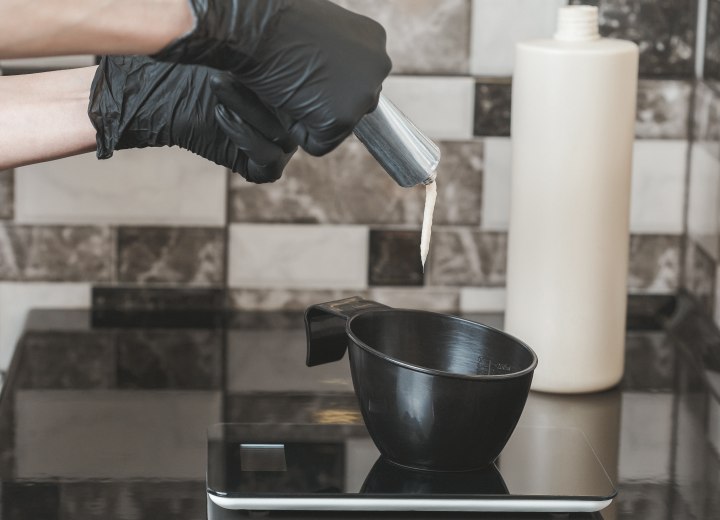Peroxide and White Splices

3% peroxide, is this for depositing tint now instead of the norm 6%? Also, the latest trend I see is the really white splices. Is this achieved just with 12% bleach or is there a special product out there which I can't find? Really, really appreciate your help.
• 3% peroxide equals 10 volume peroxide
• 6% peroxide equals 20 volume peroxide
• 9% peroxide equals 30 volume peroxide
• 12% peroxide equals 40 volume peroxide
The common formula for depositing tint is 10-volume peroxide (or 3%) this is because 10-volume peroxide offers no lift to the existing color, but simply softens the hair shaft to allow the color molecules to penetrate and be deposited.
The 6% solution (20-volume) peroxide is the most commonly used peroxide formula because it offers an average of one-level of lightening before the color is deposited (more if heat is used during processing) and allows for even coverage of grays and uniform coloring on resistant hair.
9% (30-volume) peroxide gives 2-3 levels of lift and is good for subtle hair color changes. 12% (40-volume) peroxide gives 3-4 levels of lift and is good for bringing hair from one general color range to another (dark to medium or medium to light). As always, application of heat can maximize the amount of lift from a particular peroxide formula.
The very light highlighting that is now popular these days is achieved by using a bleaching agent in combination with peroxide developer. These bleaching agents are intended to be used "off the scalp" and can only be used through a highlighting cap or with the foil technique.
The mixtures using the bleaching agent (usually a powder) are very harsh and can burn the scalp if allowed to come into contact with skin.
©Hairfinder.com
See also:
Hair coloring
Formula to mix peroxide
The difference between emulsion bleach and powder bleach